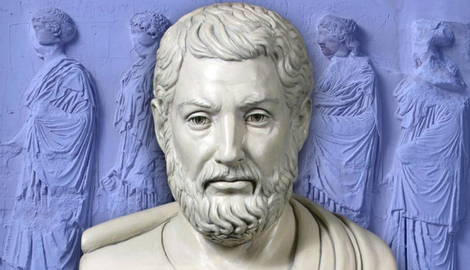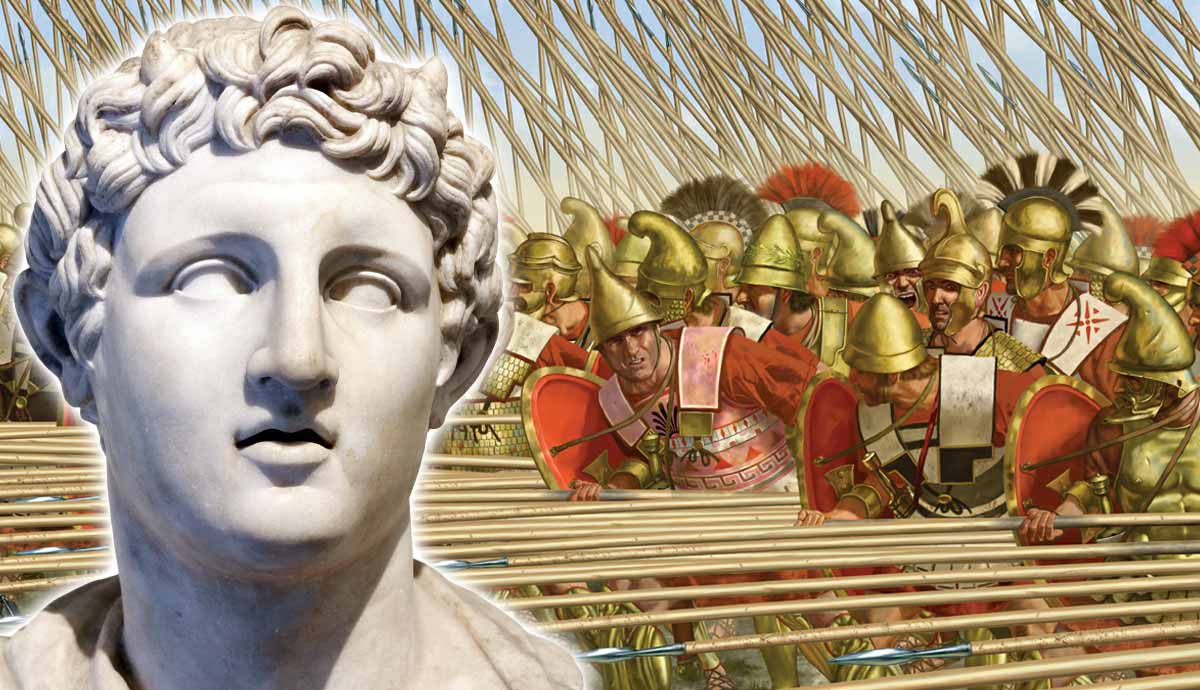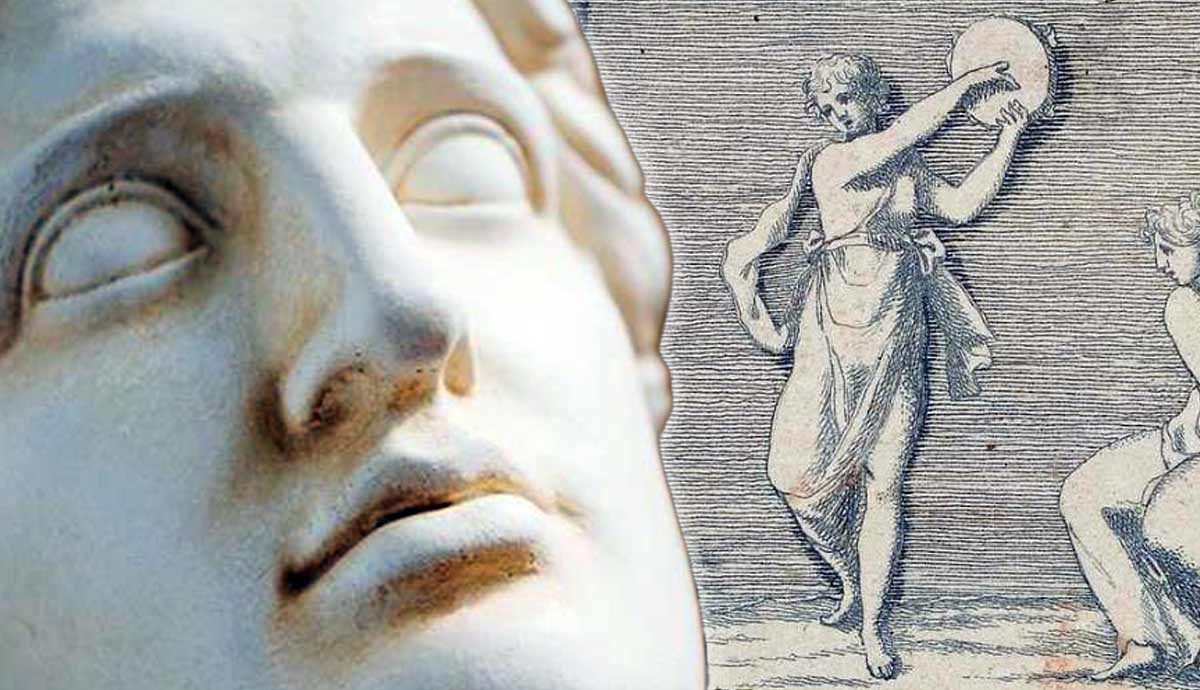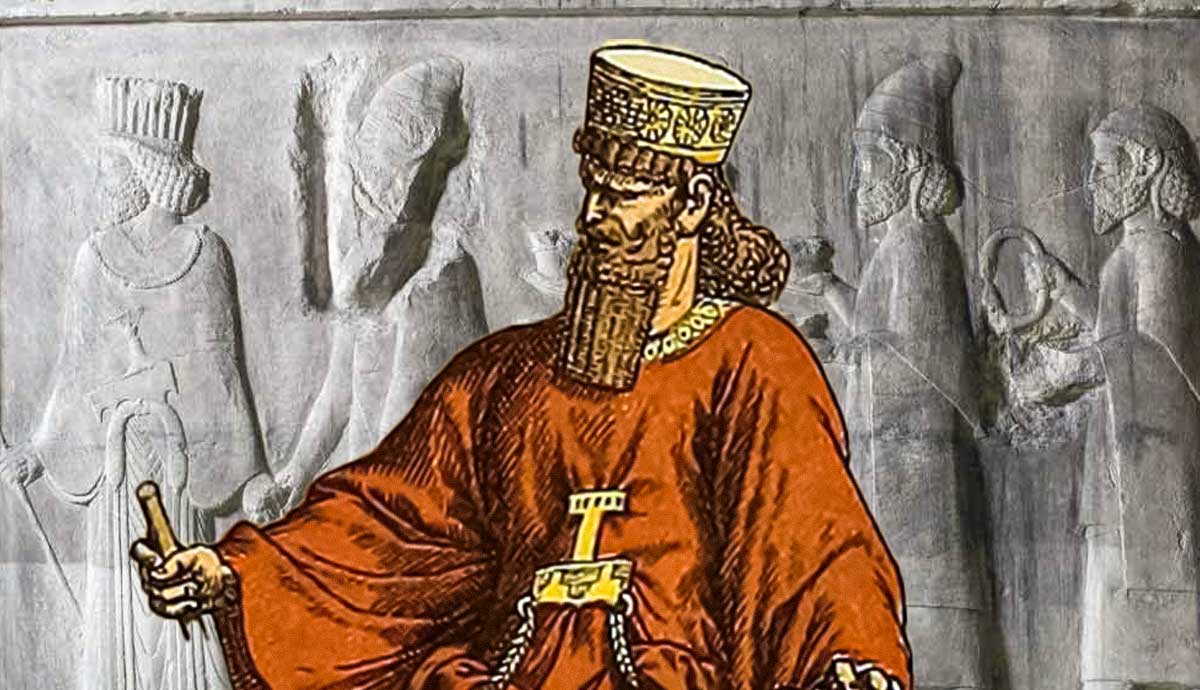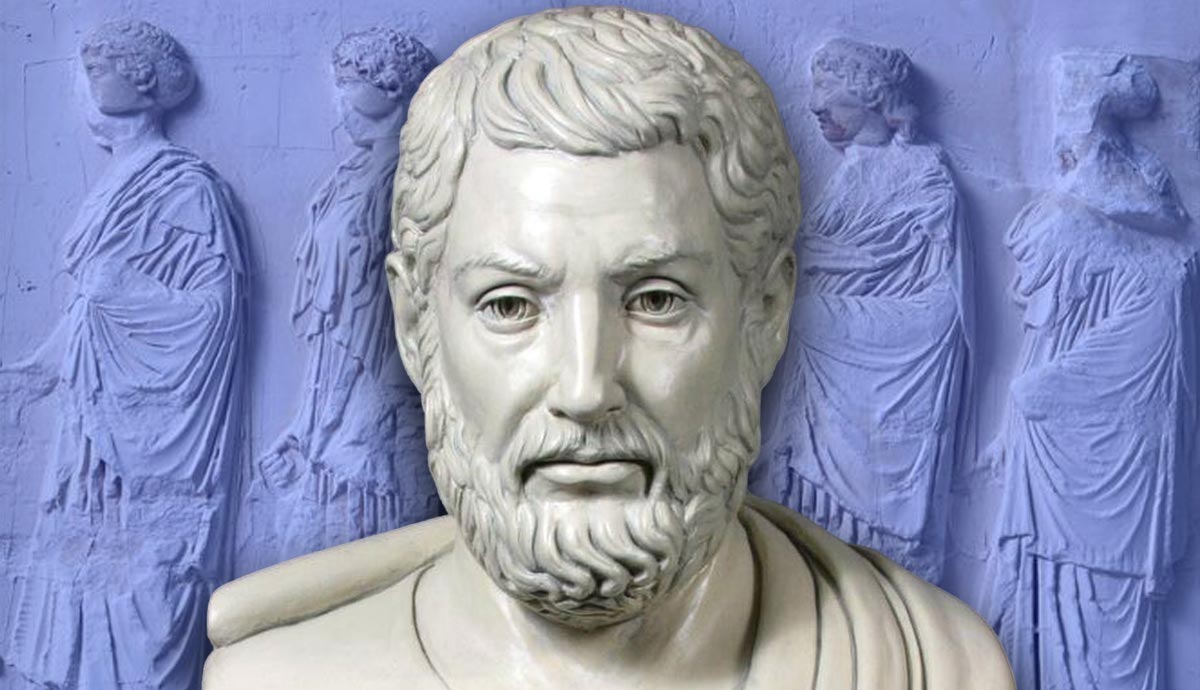
The Athenians were generous when it came to commemorating the founders of their democracy. The 6th-century reformer Solon was held in high regard, as were the two assassins of Hipparchus, Harmodius and Aristogeiton. Even the mythological king Theseus was venerated. Oddly, the one man who had the greatest claim to be the founder of democracy, Cleisthenes, was frequently forgotten. Consequently, we know very little about the man and his motivations today. He was an important aristocrat in 6th-century BCE Athens and his radical reforms fundamentally altered Athenian society. We have few other facts about his life or death, which raises intriguing questions. Was Cleisthenes a democrat or a manipulative aristocrat? And was he a leader or was he led?
Alcmaeonids and Pisistratids

In the 6th century BCE, Athens was an unsettled and divided society. Aristocratic families dominated, but monarchy had long disappeared. Tensions among the elite and between them and the rest of the population often led to violence. In 594/3 BCE, the Athenians turned to one man, Solon, to try and sort things out. He did calm tensions somewhat by offering some protection to the non-elites, for which he was later remembered as a founder of democracy. But the rest of the century was dominated by Pisistratus, who set up a hereditary tyranny for his family, the Pisistratids.
With one family suddenly all-powerful, the other aristocratic clans had to decide how to react. One such clan was the Alcmaeonids. They were known to have been a powerful family from at least the 7th century BCE. They suppressed an attempted coup by an aristocrat named Kylon. Their sacrilegious murder of Kylon’s supporters earned the Alcmaeonids the label of a cursed family. It is among this family that we find Cleisthenes.
Cleisthenes’ name had a history, and not one we would expect for a father of democracy. Cleisthenes’ maternal grandfather was Cleisthenes of Sicyon, the tyrant of a small city in the northern Peloponnese. The Alcmaeonids appear like any other competing aristocratic clan. They were not opposed to the principle of one-man rule, so long as that man was an Alcmaeonid.
Few actions are ascribed directly to Cleisthenes, but the Alcmaeonids play a major role in the story of the tyranny in Athens. Cleisthenes and the Alcmaeonids certainly opposed the rule of Pisistratus, but they were also willing to work with the tyrant. At times, the Alcmaeonids allied with the new regime and served under it (Aristotle.Ath.Pol.14.4). Eventually, any alliance broke down, and the Alcmaeonids found themselves in exile. Being cunning political operators, they turned this to their advantage.
End of Tyranny

According to Herodotus (5.63), the Alcmaeonids spent part of their exile at the sanctuary of Delphi with its famous oracle. At the time, the temple of Apollo needed rebuilding, and the wealthy Alcmaeonids took on the job. They not only rebuilt the temple but made it more beautiful than ever. The gleaming new temple was effectively a bribe. In return, the oracle told any passing Spartans that they needed to remove the Pisistratids from Athens. Though reluctant, the pious Spartans eventually responded.
Pisistratus himself seems to have been a capable ruler of Athens and left his mark on the city. However, his sons, Hippias and Hipparchus, were not so able. When the latter was assassinated, Hippias’ regime became harsher and more unpopular. With the Alcmaeonids and the Oracle of Delphi in his ear and signs of weakness in Athens, the Spartan King Cleomenes eventually acted and ousted Hippias in 510 BCE. Despite an ambiguous relationship with the dynasty, this secured the Alcmaeonids’ and Cleisthenes’ image as opponents of tyranny.
Revolution Begins

One reason the Pisistratids were initially relatively popular was that they put a temporary end to the potentially violent competition between the aristocrats. With the tyranny over, the aristocratic families resumed their old ways, and rivalry between Cleisthenes and another aristocrat, Isagoras, dominated Athenian politics. While information is limited, it appears that this rivalry was not ideological, but it would soon take a dramatic turn.
So far, Cleisthenes and the Alcmaeonids had followed a traditional aristocratic course in politics. They alternated between cooperating with and opposing a tyranny that emerged from a rival aristocratic clan. When forced into exile, they helped overthrow their opponent. Once back in Athens, the familiar game of politics as a battle between rival aristocrats resumed. However, a new player, the people of Athens, was about to enter the game.
Unfortunately, we lack a detailed account of the years following the fall of Hippias. What we are told is that Cleisthenes began to lose the contest with Isagoras and turned to the people of Athens for support (Herodotus.5.66/Aristotle Ath.Pol.20.1). In the absence of a detailed timeline of events, we do not know who took the initiative. It is possible Cleisthenes had already started a reform process, and it was this that made his turn to the people possible. It is equally possible that the non-elite Athenians were already able to act for themselves.

The latter possibility is certainly suggested by what happened next. Cleisthenes’ turn to the people shifted the balance of power his way, so Isagoras responded by turning to King Cleomenes and Sparta, at the time the most powerful force in Greece. The Alcmaeonids had used religion against the Pisistratids, and now, it was being turned against them. Recalling the old curse for sacrilege the family incurred a century earlier, Isagoras and Cleomenes demanded the expulsion of the accursed Alcmaeonids. Cleisthenes was once again forced into exile, soon followed by 700 prominent families. The leadership of the anti-Isagoras faction had been removed. Isagoras and Cleomenes now tried to settle affairs to their own liking and set up an aristocratic regime headed by Isagoras.
The first surprise came when the council of 700 prominent Athenians refused Cleomenes’ order to disband. Cleomenes and Isagoras sought a military solution and occupied the Acropolis of Athens. While the Spartans and Isagoras held the natural fortress in the middle of Athens, they swiftly lost control of the surrounding city. The Athenian people rose up and besieged the Acropolis. Surprised by this popular insurrection, the most powerful man in Greece and his Athenian aristocratic friends were forced to surrender after just two days. While we do not know the composition of the council, which was evidently still in Athens, it seems the Athenians had acted on their own in the absence of Cleisthenes and the exiled families. The resort to seizing the Acropolis and their quick surrender suggests that Cleomenes and Isagoras were prepared for this scenario. In the absence of Cleisthenes, the Athenian people, the demos, had taken control. Their insurrection cleared the way for a new arrangement, democracy.
Radical Reforms

What is puzzling about Cleisthenes is that his career followed a traditional course and he was absent from the revolutionary moment. Nevertheless, when he returned, he led a radical change which fundamentally altered Athenian society.
The foundation of Cleisthenes’ reforms was a total reorganization of Athens and its territory of Attika. Previously, the Athenian population had been organized into four tribes but were, in effect, divided between three groups based on their location in Attika: city, coast, or hills. This formed the base of aristocratic power as the Alcmaeonids traditionally led those from the coast while the Pisistratids sought their power in the hills.
This traditional system was now broken and replaced by ten new tribes. These tribes were, in turn, divided into smaller units, with Attika divided into 139 districts called demes. Previously, Athenians could identify themselves by family; now, they were to be identified by their deme. The deme became the basic political unit, and every Athenian citizen was to be registered with a deme and carry its name. The ten tribes were composed of a mixture of demes from the coast, city, and hills. The Athenian community was no longer to be based around family and aristocratic clans. Every Athenian was now, first and foremost, a citizen.

The ten tribes would each send 50 members to create a 500-man council (Boule), which would govern on a day-to-day basis and set the agenda for the assembly (Ekklesia) of all male citizens over 20, which would meet on the Pnyx hill and debate and vote on policy. The justice system would work on a similar basis with a pool of 6,000 jurors chosen each year to serve on juries of 201, 401, or 501 members. Such juries meant cases were tried and judged by the Athenian people. While the larger number of judges helped prevent bribery. Boards of magistrates ran the city, with some posts being filled by random selection and others, such as the generals, being directly elected.
Cleisthenes is also credited with creating the system of ostracism. Every year, the Athenians had the opportunity to vote to send one member of the community into exile for ten years. The unfortunate citizen was not to be harmed, but if judged dangerous to the community, they could be removed.
Elements of the aristocratic regime were retained. Cleisthenes did not alter the social classes that Athenians had long been divided into, which limited the participation of some of the poorest citizens. The nominal heads of the Athenian state, the Archons, and the prestigious body of elders, the Areopagus, were unchanged. Both were bastions of aristocratic influence.
It is also possible Cleisthenes tried to shield the Alcmaeonids. Old areas of Alcmaeonid power seem to have been grouped together in the same tribe, potentially maintaining old networks. While the demos had been handed significant power and an unprecedented role in governing themselves, it would take another half-century for the Athenian democracy to fully develop. What Cleisthenes had created was not referred to as democracy but Isonomia, a system of political equality between the demos and aristocracy.
Cleisthenes’ Why?

Our few sources clearly ascribe these sweeping reforms to Cleisthenes, leaving us with the dilemma of an aristocrat breaking aristocratic power. We cannot dismiss the idea that Cleisthenes’ motives were honest and that he genuinely saw the need to transform Athenian society. However, the events suggest a reason why he was later remembered without being lauded.
The decisive action in the revolution was the uprising by the Athenians against Cleomenes and Isagoras, which happened without Cleisthenes and a large part of the possible leadership. At that moment, in 508/7 BCE, the Athenian demos showed that it was capable and willing to act on its own. The idea of an Athenian community may well have developed under Pisistratid rule. The long tyranny likely weakened attachments to the sidelined aristocracy, while the Pisistratids sponsored religious festivals and building projects fostered a sense of Athenian identity.

When Isagoras and Cleisthenes tried to continue aristocratic politics as normal, they found that the Athenians no longer wished to go back to the bad old ways. The speed with which a complicated reform such as the deme system—which fundamentally altered the way the community was run, what people were expected to do, and even how they referred to themselves—suggests a general consensus around the idea of breaking aristocratic power. Once the obstacles of Isagoras, his supporters, and Cleomenes had been removed, there did not seem to be much resistance, and the democratic system began to develop swiftly.
Cleisthenes may then have been following the demos rather than leading it. In this scenario, he can be credited with the astuteness to understand that Athens had changed, and the adaptability to put himself at the head of that process. But, understandably, the Athenians never embraced him as a hero.
Forgotten Death and Legacy

We may have got a clearer idea of Cleisthenes’ intentions had he lived longer. Fitting in with the general lack of basic biographical information on him, we do not know when he died, but the reforms are the last we hear of him. By the late 500s BCE, he could easily have been 60 or older, so a quiet, natural death would not have been unusual for the time. Centuries later, the writer Pausanias (1.29.6) recorded that there was a monument to Cleisthenes in the Athenian public cemetery, but there were few literary or artistic reminders of his role.
We do know that the Alcmaeonids lived on. A few decades into democracy, when the Athenians were fighting for their lives against the Persians, there were rumors that the family was willing to betray Athens, suggesting that they may not have been entirely comfortable in the early decades of the new system.
Whatever Cleisthenes’ role and motivations, his reforms lived on. The Athenians secured their democratic revolution in 506 BCE when they saw off a combined invasion of a vengeful Cleomenes, the Boiotians, and the Chalkidians, prompting Herodotus (5.78) to remark that free peoples always fight better than those under tyranny. The democracy that Cleisthenes helped bring about lived on for centuries.
Bibliography
Evans, N. (2010) Civic Rites: Democracy and Religion in Ancient Athens, University of California Press.
Ober, J. (2007) “I Besieged That Man: Democracy’s Revolutionary Start,” Origins of Democracy in Ancient Greece, pp. 83-104, University of California Press: Berkeley.
Ostwald, M. (2006) “The Reform of the Athenian state by Cleisthenes,” The Cambridge Ancient History Volume 4: Persia, Greece, and the Western Mediterranean, c. 525 to 479 BC, pp. 303-346, Cambridge University Press: Cambridge.
Thorley, J. (2004) Athenian Democracy, Routledge: London.
